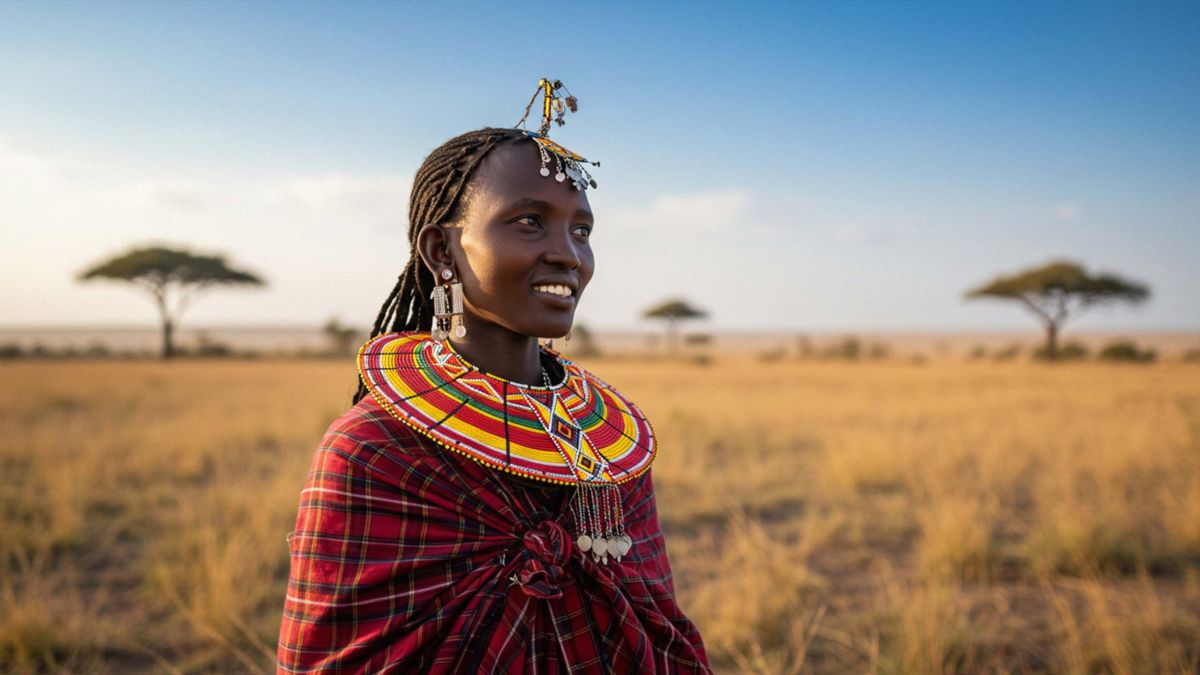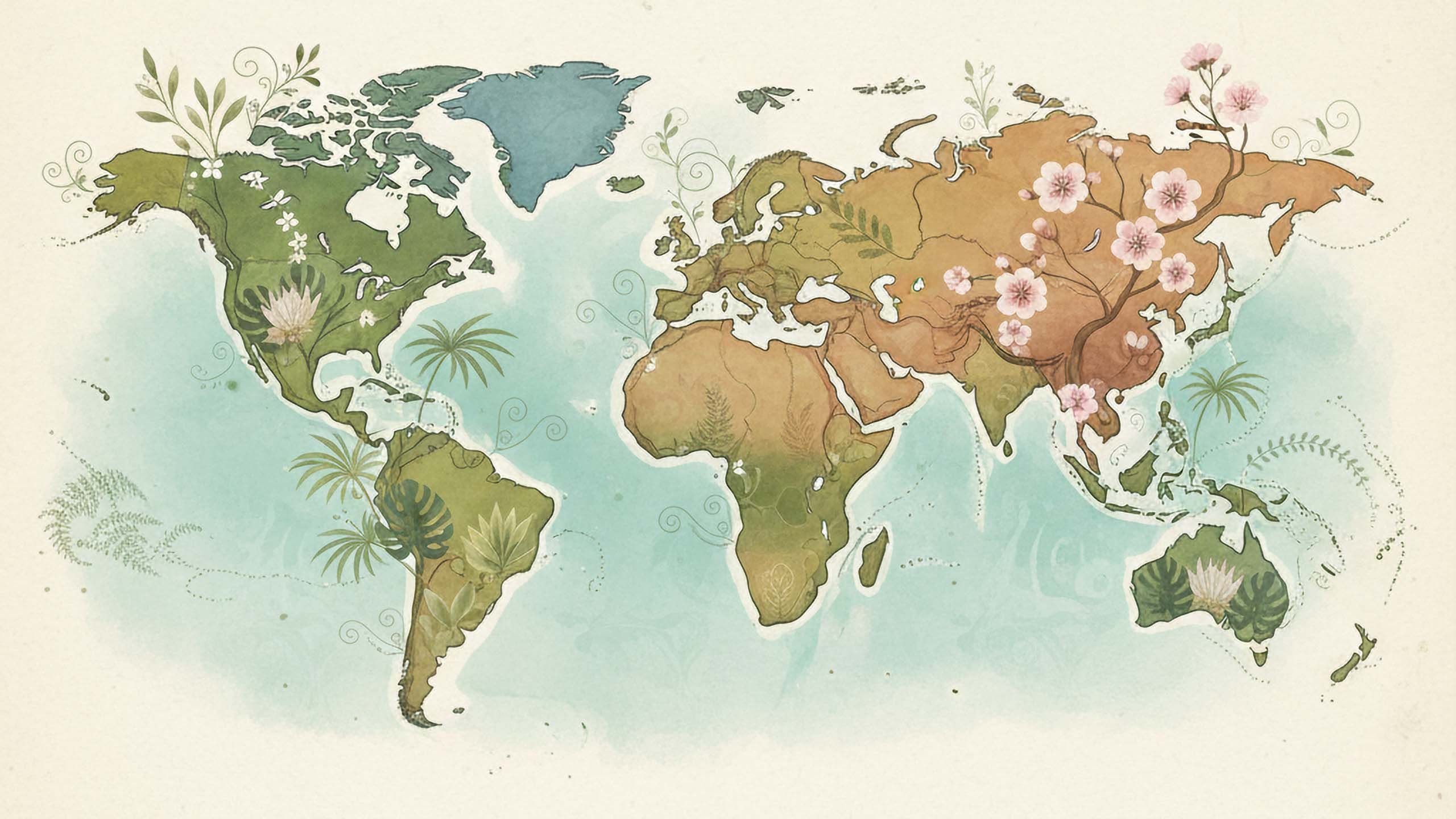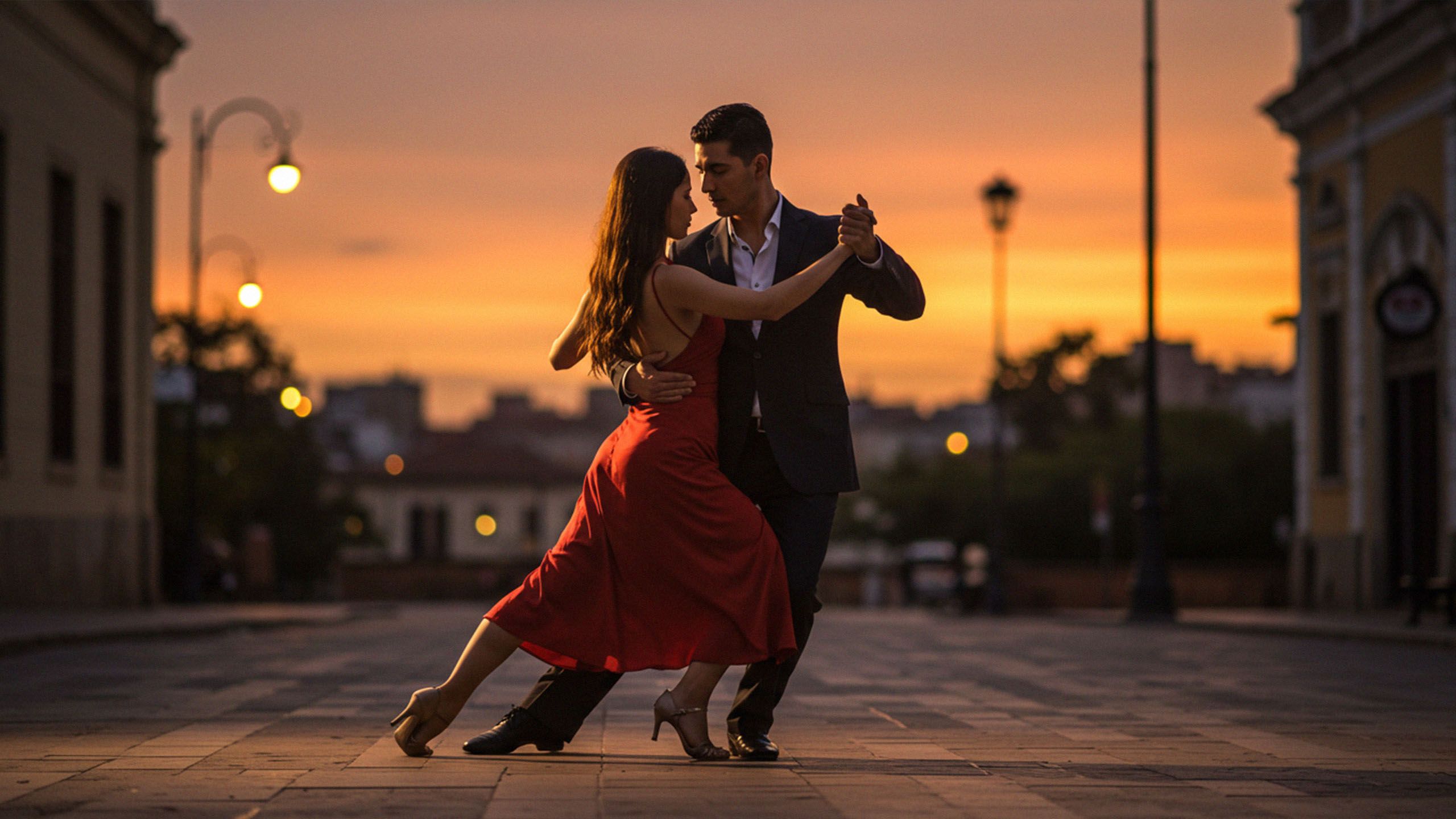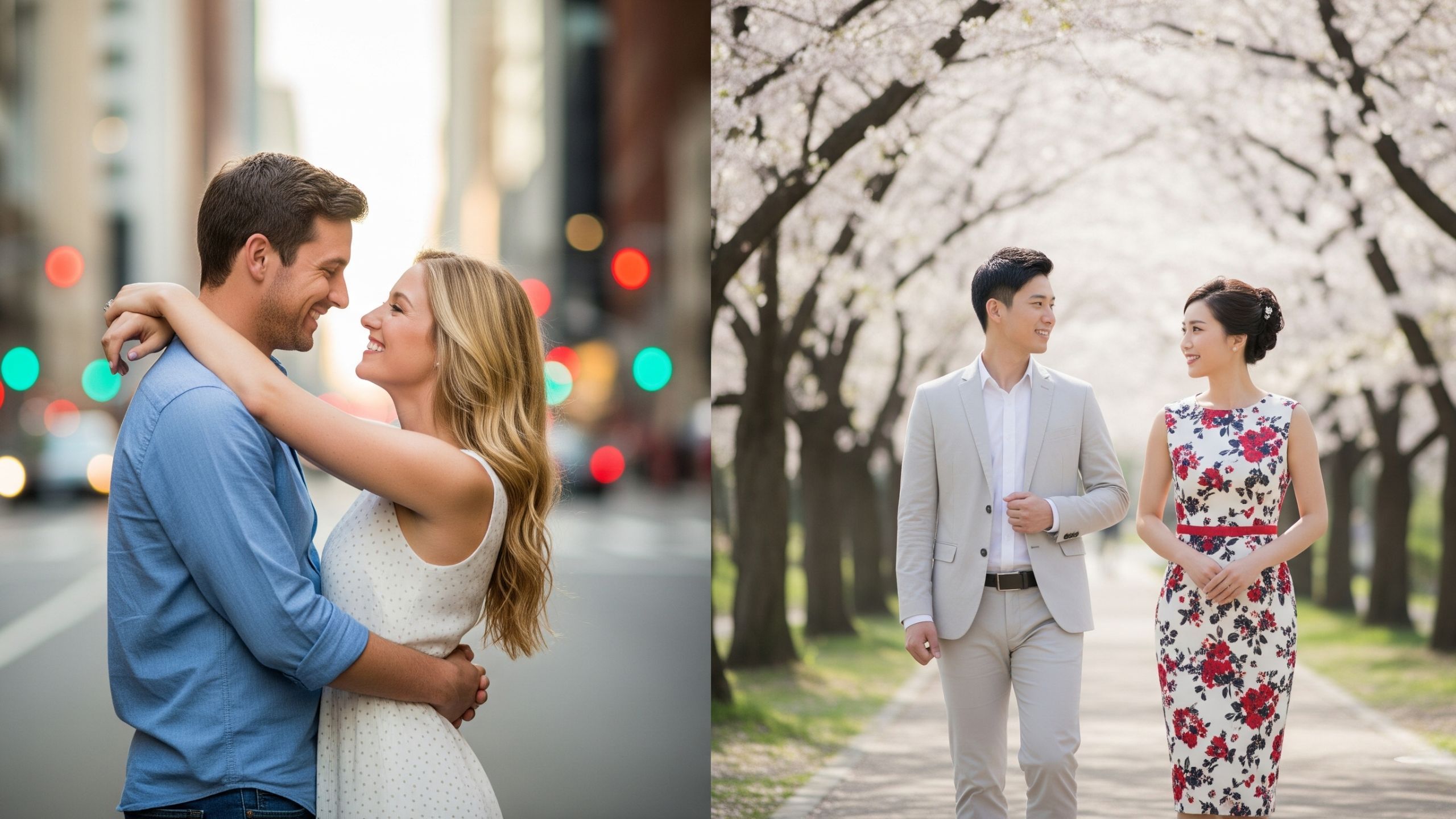Adorned in Time: The Enduring Traditions of African Beauty

Adorned in Time: The Enduring Traditions of African Beauty
Across the vast and varied landscapes of Africa, beauty is not merely a fleeting aesthetic but a profound expression of identity, heritage, and community. From the intricate beadwork of the Maasai to the delicate henna patterns of the Hausa, traditions of personal adornment weave stories of belonging and individuality.
These practices, passed down through generations, reveal a deep connection to culture, environment, and history, offering a window into the values and creativity of African societies.
The Language of Beads and Braids
“In Africa, beauty is a conversation, one that speaks of pride, creativity, and continuity.”
In many African cultures, adornment is a form of communication, speaking where words might fall silent. Among the Maasai of Kenya and Tanzania, beadwork is a vibrant lexicon. Women craft necklaces, earrings, and bracelets with meticulous precision, using colors and patterns to signify status, age, or marital bonds. Red beads, symbolizing strength and unity, often dominate ceremonial pieces, while blue might denote peace or connection to the divine. Each piece is a narrative, worn with pride during rites of passage or daily life.
Similarly, hair braiding across West Africa, particularly among the Yoruba of Nigeria, is an art form steeped in meaning. Intricate styles, from cornrows to thread-wrapped designs, can indicate social standing, clan affiliation, or even a woman’s role as a mother or warrior. The act of braiding is communal, a moment for women to gather, share stories, and reinforce bonds. These traditions are not static; they evolve with time, incorporating modern materials like synthetic threads while preserving their cultural core.
Henna: The Ephemeral Art of Celebration
In northern Africa, particularly among the Hausa of Nigeria and the Berber communities of Morocco, henna is a cherished ritual. Applied during weddings, festivals, or religious observances, henna’s intricate patterns transform hands and feet into living canvases. The paste, derived from the Lawsonia inermis plant, stains the skin with designs that can last weeks, symbolizing joy and protection. For Hausa brides, henna is a rite of transition, with patterns often concealing the names of loved ones, a secret shared only with the groom.
The process is as significant as the result. Women gather to apply henna, singing and sharing wisdom, creating a space of intimacy and celebration. The designs vary by region—geometric motifs in Morocco, floral swirls in Sudan—reflecting local aesthetics and histories. Yet, the practice unites communities, a testament to beauty’s role in fostering connection.
Did You Know? During Hausa henna ceremonies in Nigeria, women often hide the groom’s name within intricate patterns, creating a playful secret to be discovered on the wedding night.
Scarification: Marks of Identity
In some African cultures, beauty is etched into the skin itself. Scarification, practiced among groups like the Dinka of South Sudan and the Yoruba of Nigeria, involves creating patterns through controlled cuts that heal into raised scars. These marks, often applied during adolescence, signify lineage, courage, or readiness for adulthood. For the Dinka, forehead scars are a badge of honor for men, signaling maturity, while women may bear delicate patterns on their torsos, celebrating femininity and resilience.
Though scarification has declined in urban areas due to health concerns and changing tastes, it remains a powerful symbol in rural communities. The practice reflects a worldview where beauty is not superficial but a permanent commitment to one’s heritage and place in the world.
Q&A: African Beauty Traditions
What makes African beauty practices unique?
African beauty practices are deeply rooted in cultural identity, often serving as a form of communication, signifying status, lineage, or celebration through intricate designs and communal rituals.
Are these traditions still practiced today?
Yes, many practices like beadwork, braiding, and henna remain vibrant, especially in rural areas, though urban settings often blend them with modern styles.
Can men participate in these beauty rituals?
Absolutely. Men, such as the Wodaabe during the Gerewol festival, engage in elaborate adornment like body painting to express identity and attract partners.
How have global influences affected these traditions?
Global trends have introduced new materials and styles, but many communities preserve core practices, adapting them to contemporary contexts like fashion and social media.
The Role of Men in Adornment
While women’s adornment often garners attention, men across Africa also engage in rich traditions of self-expression. Among the Wodaabe of Niger, the Gerewol festival is a striking example. Men paint their faces with red ochre and white clay, accentuating their features to attract potential partners. The effect is dramatic, with symmetrical designs emphasizing eyes and cheekbones, accompanied by elaborate dances. This tradition underscores a cultural value where beauty is a shared endeavor, not confined to one gender.
In Ethiopia’s Omo Valley, Karo men use body paint and feathers to create bold, temporary designs for ceremonies. These acts of adornment are not mere decoration but a dialogue with ancestors, spirits, and the community, reinforcing social cohesion.
Modern Influences and Global Exchange
African beauty traditions are not frozen in time; they adapt to modern contexts while retaining their essence. Urban centers like Lagos and Nairobi buzz with salons offering contemporary twists on braiding, incorporating vibrant extensions or minimalist styles inspired by global trends. Henna artists experiment with glitter and metallic inks, blending tradition with innovation. Even beadwork evolves, with artisans creating pieces for international markets, merging cultural motifs with modern fashion.
Globalization has also brought challenges. The influx of Western beauty standards, amplified by media, sometimes overshadows local practices. Yet, there is resilience. Movements to celebrate natural hair among African women, for instance, have gained momentum, with women embracing afros and locs as acts of cultural reclamation. Social media platforms amplify these voices, showcasing traditional and modern African aesthetics to a global audience.
| Practice | Culture/Region | Significance | Materials |
|---|---|---|---|
| Beadwork | Maasai (Kenya, Tanzania) | Signifies status, age, marital bonds | Colored beads, thread |
| Hair Braiding | Yoruba (Nigeria) | Indicates social standing, clan affiliation | Natural hair, synthetic threads |
| Henna | Hausa (Nigeria), Berber (Morocco) | Symbolizes joy, protection, celebration | Henna paste |
| Scarification | Dinka (South Sudan), Yoruba (Nigeria) | Marks lineage, courage, adulthood | Tools for controlled cuts |
| Body Paint | Wodaabe (Niger), Karo (Ethiopia) | Enhances features, ceremonial expression | Ochre, clay, feathers |
Beauty as a Bridge
What unites these practices—beads, braids, henna, scarification, or paint—is their role as a bridge between past and present, individual and community. They are not about conforming to external ideals but about asserting identity in a world that often seeks to define it. In Africa, beauty is a conversation, one that speaks of pride, creativity, and continuity.
As the world becomes more connected, these traditions offer universal lessons: that beauty is deeply personal yet profoundly communal, a balance of self-expression and shared heritage. From the vibrant markets of Marrakech to the grasslands of the Serengeti, African perspectives on beauty remind us that to adorn oneself is to tell a story—one that resonates across time and borders.
Disclaimer: The articles and information provided by the Vagina Institute are for informational and educational purposes only. This content is not intended to be a substitute for professional medical advice, diagnosis, or treatment. Always seek the advice of your physician or another qualified health provider with any questions you may have regarding a medical condition.


 English
English  Deutsch
Deutsch  Español
Español  Français
Français 



